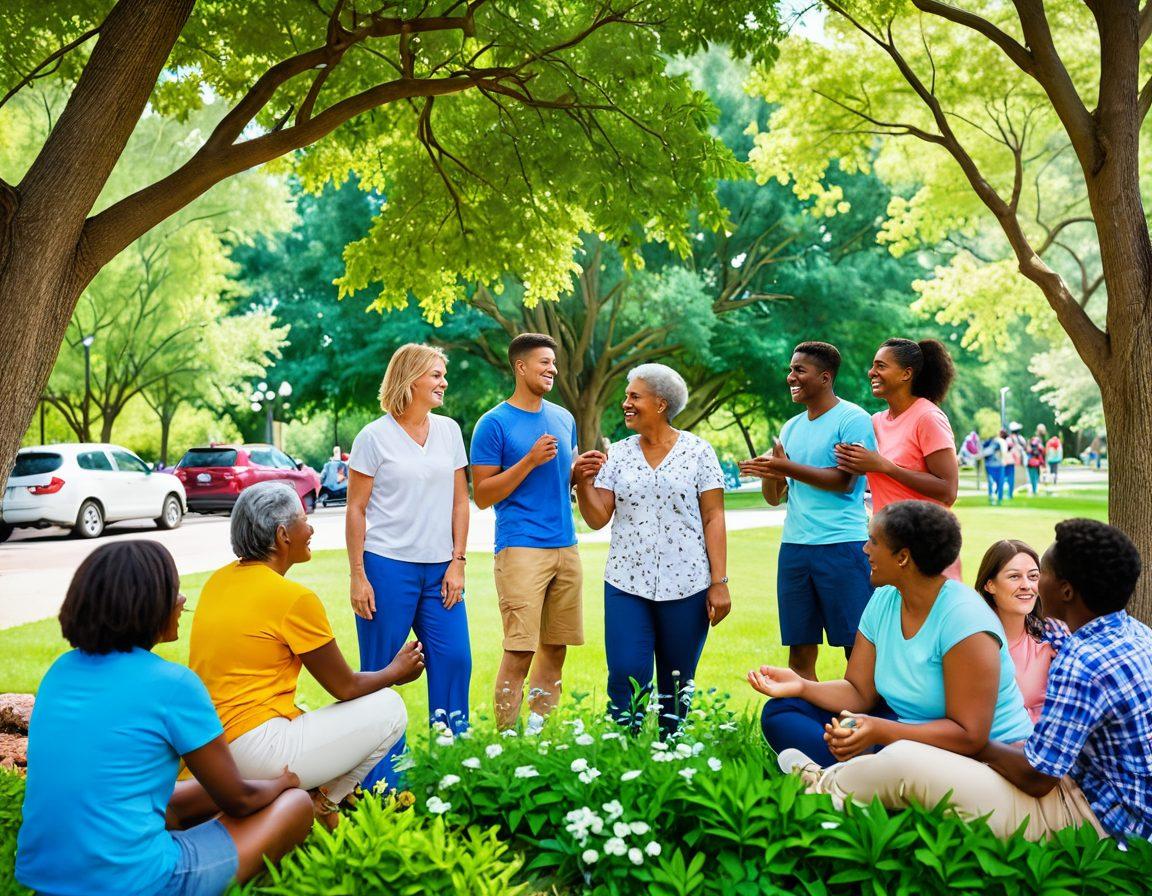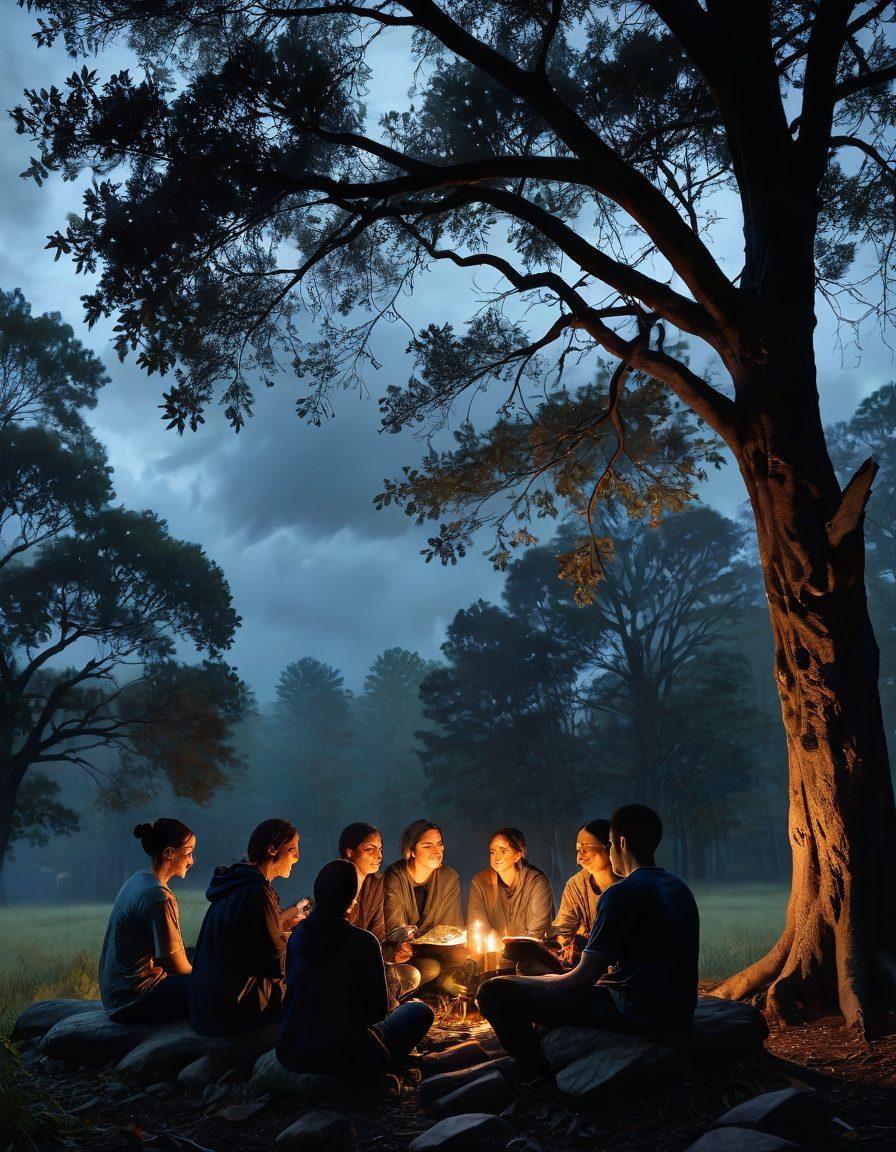Navigating the Shadows: Understanding Sorrow and Community Resilience
In a world where the shadows of sorrow loom large, the collective spirit of community often serves as a radiant beacon of hope. When we experience periods of unhappiness, feelings of dejection can surround us, making our days appear dismal and our spirits mournful. However, history has shown time and time again that the power of community is a powerful antidote for feelings of melancholy. By harnessing the strength of our local connections, we can find light in the darkness and reclaim our joy, even when sorrow tries to cast us into its depths.
Consider a time when you felt lost and blue, perhaps following a regretful experience or a disheartening setback. It is in these sorrowful moments that we often turn to our community. Whether it's a neighborhood gathering, a friendly coffee chat, or digital connections through social media, being surrounded by others who understand our struggles can transform our outlook profoundly. As the saying goes, 'A burden shared is a burden halved.' This belief transcends the melancholy and serves as a reminder that we are not alone in our journey.
Take a moment to think about the geographical area in which you reside. How does your surrounding community respond to the trials faced by its members? In many instances, local initiatives arise from the ashes of sorrow, creating support networks that envelop the downhearted. From soup kitchens serving the disheartened to mental health hotlines assisting the mournful, these acts of compassion stem from a shared experience of sorrow and a collective desire for healing. In essence, community nurtures resilience, turning tears into strength and feelings of misery into actions of possibility.
One compelling story is that of a provincial community that banded together following a tumultuous event. After the sorrowful devastation of a local disaster, neighbors who once shared merely a smile at the mailbox found themselves deep in conversations about grief and recovery. Rather than remaining isolated in their grief, they built a support system, showing that combination of vulnerability and strength can help lift the spirits of everyone involved. The local residents organized regular gatherings, creating a safe space where they could share their experiences, and gradually, the atmosphere shifted from gloomy to hopeful.
Community resilience is an undeniable force. If you find yourself feeling downcast or dejected, take the first step toward your local resources. Engaging with your neighborhood can open doors to unexpected friendships and healing. After all, when the winds of sorrow blow, remember that together, we can create a tapestry of hope woven from the threads of our shared experiences. Let's embrace our communities not just as places to inhabit, but as vital sources of strength during our most sorrowful times.
From Dejection to Strength: How Local Connections Foster Resilience in Difficult Times
Sorrow is a heavy blanket that can drape over our lives, leaving us feeling blue, disheartened, and melancholic. In times of hardship, it’s easy to slide into a state of feeling dejected or downcast — to become engulfed in a dismal sea of sorrow. But what if I told you that even in the depths of this dark emotional mire, we can find flickers of strength? In our local communities, connections formed through shared experiences can foster resilience that lifts us from our unhappiest moments. Let’s explore how the fabric of community can transform our grief into strength and solidarity.
Imagine standing on a street corner in your neighborhood, surrounded by familiar faces, yet feeling utterly alone in your misery. You watch as others move through their days, seemingly unburdened by the weight of their sorrowful thoughts. Yet, there lies an unspoken truth: many individuals, like you, are grappling with a sense of loss or regret in their own lives. In these shared, vulnerable moments, an opportunity arises — we can either retreat into our gloomy corners or reach out to our community, embracing the connections that can fortify our spirits.
"Connection is the antidote to isolation." This quote underscores the value of our local relationships during troubling times. When we bravely step out, whether it’s joining a support group or reaching for a neighbor’s hand, we lay the groundwork for transformation. Humanity thrives on relationships, and when we unite in our sorrow, we not only share our burdens but also lighten them. Imagine how conversations over a warm cup of tea can turn shared despair into hopeful dialogue; that’s community resilience in action, turning downhearted tribulations into collective strength.
Each neighborhood and locale is painted with stories of resilience. From regional coffee shops that welcome those feeling blue, to community centers providing space for shared healing, there are numerous initiatives thriving in our provincial areas. Local volunteers gather to create events that celebrate life while honoring the sorrow that we may carry. These actions don’t erase the struggles we face; rather, they help us reshape our narratives. We move from the sorrowful chapters—full of melancholy and dismay—into promising new volumes that detail our journeys towards recovery and strength.
So, how can you foster this resilience in your community? Start small — reach out to a neighbor or initiate conversations about mental health challenges within your district's social media groups. Offer a listening ear or organize community gatherings focused on emotional wellness. Remember, overcoming sorrow is not an individual challenge but a communal effort. Together, we can transform feelings of misery into moments of joy, redefine a downcast state into inspiring resilience, and create a community that thrives even in the face of adversity.
Embracing Gloom: Uniting Through Shared Misery to Build a Stronger Community
In a world filled with hustle and bustle, it's easy to overlook the shadows of melancholy that linger just beneath the surface. Sorrowful moments often creep into our lives, leaving us feeling downcast and dejected. But what if we could transform our shared misery into a powerful force for change? This is the heart of community resilience – the idea that through embracing gloomy days and acknowledging our collective suffering, we can unite and emerge stronger. Have you ever noticed how a shared experience of sorrow can connect hearts and minds?
When we endure sorrow, whether it’s from personal loss or regional disasters, we can feel profoundly lonely. Yet, it's these very moments of unhappiness that can carve out deep bonds within our locale. Imagine a neighborhood rallying together to support a family in mourning, or a community organizing a memorial for an event that left them all feeling regretful and mournful. Such acts of solidarity illuminate the beauty hidden within dismal circumstances. By connecting over our shared experiences of sadness, we not only validate each other's feelings but also cultivate a sense of belonging that is vital for overcoming our downhearted moments.
Sorrow can be as isolating as it is universal. It asks us hard questions: Why must we bear the weight of such sorrow? Why do we feel so blue in times of despair? But, as we navigate these questions, we find that in our darkest hours, we can also shine the brightest as a community. Look around your territorial area; consider how many initiatives have sprung from a desire to uplift others amid personal or collective grief. A community garden planted in memory of a beloved local figure, support groups established to help families navigate their loss — these are not just acts of charity, but expressions of resilience. They serve as reminders that we are not alone in our struggles.
Think about the last time you felt particularly unhappy or downhearted. Was there a moment when someone else reached out, creating a bridge over that deep river of sorrow? “Shared sorrow is halved, shared joy is doubled,” as the saying goes. By sharing our burdens, we amplify the support network within our district and foster a culture where vulnerability isn't a weakness but a strength. This communal approach transforms sorrow from a personal wound into a collective journey of healing, proof that misery can serve as the fertile soil from which community resilience grows.
In embracing gloom, we can find not just solace but also purpose. Every story of hardship shared among neighbors can sow the seeds for improvement, empathy, and action. So how can you contribute to your community's collective resilience during tough times? Start small: Reach out to a downcast friend to share your feelings. Participate in local events that support those mourning a loss within your geographical area. Engage in discussions that not only address the sorrow but also highlight pathways for healing. Remember, it's this connection, born from our shared local experiences, that will cultivate a fertile ground for a resilient community, turning our sorrow into a catalyst for positive transformation.


